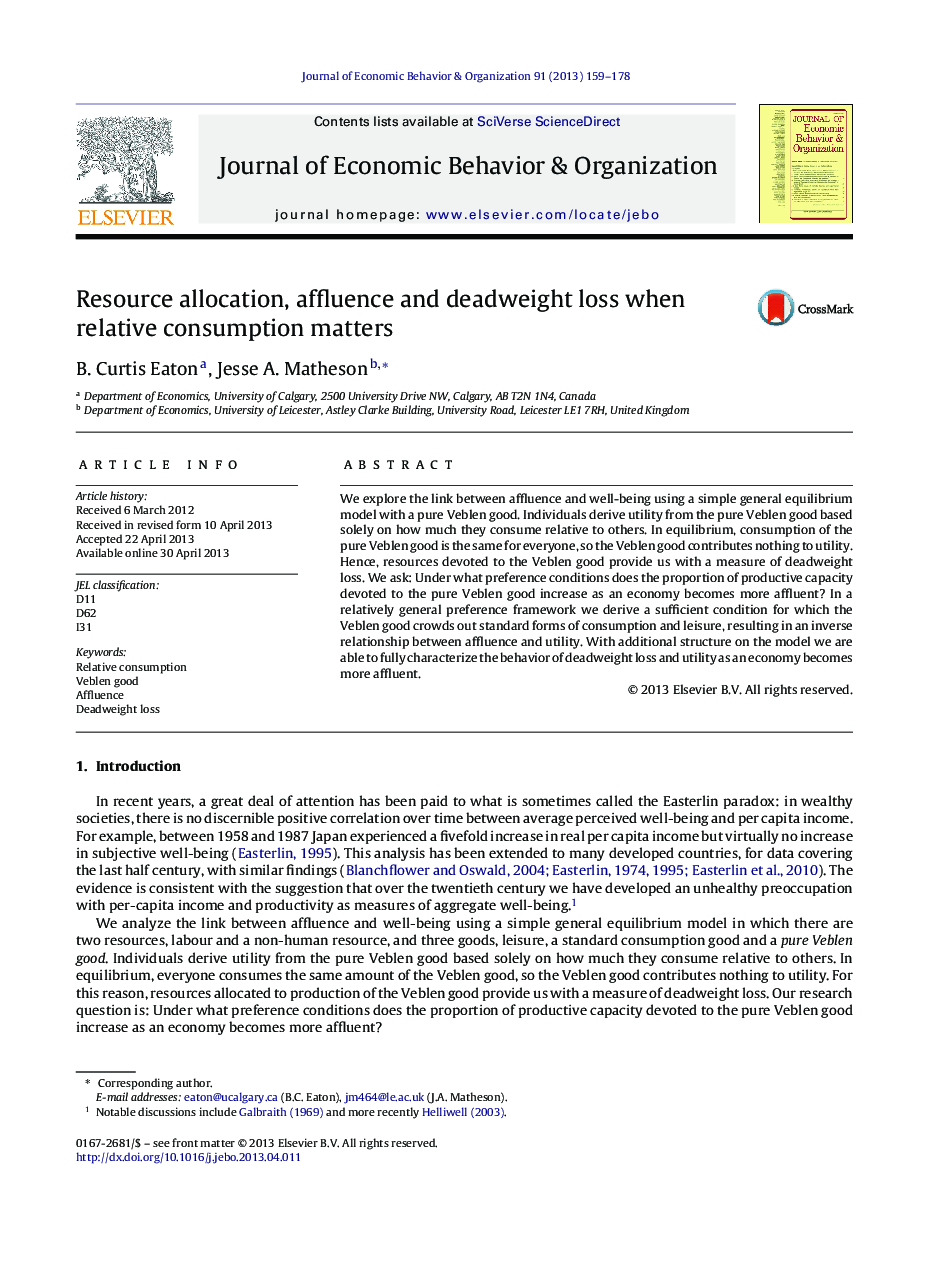| Article ID | Journal | Published Year | Pages | File Type |
|---|---|---|---|---|
| 883611 | Journal of Economic Behavior & Organization | 2013 | 20 Pages |
•We explore the link between affluence and well-being when a Veblen good is consumed.•Utility from the Veblen good is based solely on relative consumption.•Average utility and per-capita income may be inversely related.•The source of affluence, increased labour or resource productivity, is important.•Our analysis may offer a new framework for empirical work on the Easterlin paradox.
We explore the link between affluence and well-being using a simple general equilibrium model with a pure Veblen good. Individuals derive utility from the pure Veblen good based solely on how much they consume relative to others. In equilibrium, consumption of the pure Veblen good is the same for everyone, so the Veblen good contributes nothing to utility. Hence, resources devoted to the Veblen good provide us with a measure of deadweight loss. We ask: Under what preference conditions does the proportion of productive capacity devoted to the pure Veblen good increase as an economy becomes more affluent? In a relatively general preference framework we derive a sufficient condition for which the Veblen good crowds out standard forms of consumption and leisure, resulting in an inverse relationship between affluence and utility. With additional structure on the model we are able to fully characterize the behavior of deadweight loss and utility as an economy becomes more affluent.
